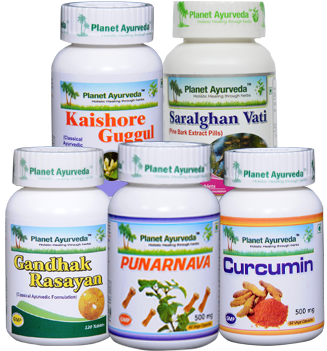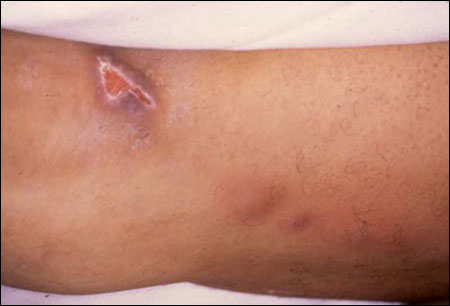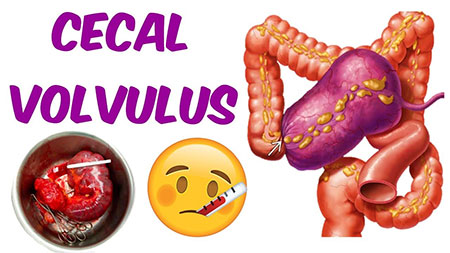Pile is the disease in which there are lumps inside and around your anus. Hemorrhoids are another term used for piles. These are the collection of inflamed tissue in the anal canal. These hemorrhoids contain blood vessels, support tissue, muscle and elastic fibers. Piles can have a range of sizes and they may be external or internal. These swollen veins are present in anus or in the lower rectum which are similar to varicose veins. In general, hemorrhoids are the vascular structures in the anal canal and in normal; they act as a cushion that help with stool control. But when they get swollen or inflamed then this is used to refer to disease. This is a very painful condition. So here in this article, we are going to discuss piles and its Ayurvedic aspect with proper Ayurvedic management.
AYURVEDIC ASPECT OF PILES
In Ayurveda, we can correlate this disease with Arsha. Our Acharya clearly mentioned that Arsha disease is a result of improper digestion. When the food is not digested and remains inside the gut then it is converted into Aama which is known as Endotoxins and this aama is the root cause of Arsha disease. The condition in which there is a severe pain like someone (enemy) stabbed at that point is known as Arsha or the mass that obstructs the passage of stool and causes pain is known as Arsha. The mass at gudavali (dentate line) is called Arsha. Arsha in the classical texts comes under the category of Mahagadas.
The term guda derived from Guda Kridayam tagu malotsarge means the portion of the body which is responsible for the excretion of mala (feces) and flatulence (apana vayu) is called as guda.
ETIOLOGY / CAUSES
The exact cause of this disease is not known. But the doctors’ believe that this disease is caused by the following factors:
- Irregular bowel habits (constipation or diarrhea)
- Lack of exercise
- Low fiber diet
- Increased pressure in the lower rectum
- Having anal intercourse
- Prolonged sitting
ARSHA NIDANA (CAUSES OF ARSHA)1
When the patient is doing the following things in their daily routine the Arsha disease is caused and those things are:
- Eating excessive heavy, sweet, cold, stale food, improper diet
- Over eating
- Eating less food
- Inaccurate food consumption
- Drink too much ghee
- Lack of exercise
- Excessive coitus
RISK FACTORS
These factors include:
- Obesity
- Prolonged sitting
- Chronic cough
- Pelvic floor dysfunction
- Pregnancy
TYPES OF PILES
Piles are of two types:
- Internal Piles: They lie inside the rectum and rarely cause discomfort. The patient has painless bleeding during bowel movement and if it progresses then may result in pain and irritation.
- External Piles: They lie under the skin around the anus. They show features like itching or irritation in anal region, bleeding, pain.
CLASSIFICATION OF ARSHA
Classification According To The Origin
There are two types:
- Sahaja arsha (Congenital)
- Janmottarkalaja arsha (Acquired)
Classification According To The Bleeding:
It is of two types:
- Shushka arsha
- Aadra arsha
Classification According To The Dosha
It is of five types:
- Vataj arsha
- Pittaj arsha
- Kaphaj arsha
- Sannipattaj arsha
- Raktaj arsha
GRADE OF PILES
- Grade 1: There is small inflammation that usually lies inside the lining of the anus.
- Grade 2: Their size is bigger than grade 1 but they also lie inside the lining of the anus. They get pushed out while defecating, but can return on their own.
- Grade 3: This type is also known as prolapsed hemorrhoids. The patient may feel these masses hanging from the rectum, but they can easily be re-inserted with the help of fingers.
- Grade 4: In this grade, these masses cannot be pushed back in and they need surgical treatment. Their size is also bigger and remains outside the anus.
CLINICAL FEATURES/SIGNS AND SYMPTOMS
In some cases these piles resolve on their own after a few days without giving signs and symptoms. But in most cases they may show the following symptoms:
- Hard and painful lump around the anus
- Itching or irritation around the anal region
- Discomfort
- Swelling around the anus
- Bleeding
- Feeling like that bowels are still full after defecation
PURVAROOPA OF ARSHA (PRODROMAL SYMPTOMS OF ARSH)2
The above quoted shloka means that the following symptoms are the Prodromal symptoms of the disease arsha and those are:
- Indigestion
- Weakness
- Bloating
- Excessive burping
- Pain in feet
- Constipation
- IBS or IBD
ROOPA OF ARSHA (SYMPTOMS OF ARSHA)3
The common symptoms of arsha are:
- Presence of mass in the anus
- Difficulty in passing stool
- Indigestion
- Bloating
- Pain and burning sensation in anal region
- Bad taste
- Anemia
- Flatulence
COMPLICATIONS
Complications are rare but if complication arises then those are:
- Anemia
- Strangulated hemorrhoids
- Blood clot
DIFFERENTIAL DIAGNOSIS
- Fissure
- Fistula
- Anal abscess
- Colorectal cancer
- Rectal varices
- Anal warts
- Rectal polyp
DIAGNOSIS
A doctor can usually diagnose this condition after going through a physical examination and also by proper medical history.
SAMPRAPTI OF ARSHA
Nidana Sevana
↓
Vibhajati Sarakittau Prithaktaha
↓
Agnimandya
↓
Malsanchaya (Sanchaya Stage)
↓
Koshtha
↓
Apanavayukopa (Prakopa Stage)
↓
Arshoutbhava (Vyakti Stage)
↓
Dosha Involvement (Bheda Stage)
↓
Arshoutpatti
↓
| Vataj Arsha |
Pittaj Arsha |
Kaphaj Arsha |
Raktaj Arsha |
Sannipata Arsha |
MANAGEMENT OF ARSHA (PILES) AT AYURVEDIC PARLANCE
Ayurveda is the ancient holistic science of healing. It has immense potential to solve or help in many challenging problems of the medical world. One of the grave diseases is Arsha and it is becoming common and increasing in the society. So it is important to treat or manage this disease as early as possible. In Ayurveda, our Acharya well mentioned the herbal treatment protocol for Arsha disease.
ACCORDING TO ACHARYA CHARAK THE PRINCIPLE TREATMENT OF ARSHA ROGA (DISEASE) IS4
This shloka means that Acharya believes that this procedure is well managed by either application of alkali or either by cauterization and these procedures are right if performed by a learned, wise and experienced surgeon.
Some Non-Operative Procedures Are
Role Of Sweden (Sudation) Therapy5
According to Acharya Charaka, If pile mass is stiff and associated with swelling and also pain is there then Sudation therapy or fomentation should be done. Firstly mass is smeared with the oil prepared by boiling chitraka (Plumbago zeylanica), alkalies and Bilva (Aegle marmelos) and then fomented with pottali (medicines tied in a piece of cloth) which is prepared or that contains yav (Hordeum vulgare), masha (Vigna mungo), kulathi (Macrotyloma uniflorum) and Pulaka (tucchadhnnya) or Pottali prepared from the cake of the sesame seed.
Role of Parisechan (Sprinkling)6
This shloka states that pile mass is also sprinkled with the decoction of the leaves of Vasa (Adhatoda vasica), Arka (Calotropis procera), Eranda (Ricinus communis) and Bilva (Aegle marmelos). It will give relief from pain and swelling.
Role Of Avagahan(Sitz Bath)7
Acharaya Charak mentioned that if there is pain in the pile mass then it should be smeared with medicated oil and give sitz bath with the help of decoction prepared from the leaves of radish (Raphanus sativus), Amla (Emblica officinalis), harad (Terminalia chebula), bahera (Terminalia bellerica), Arka (Calotropis procera), Varuna (Crataeva nurvala), Agnimantha (Premna integrifolia), Shigru (Moringa oleifera) and Pashanbheda (Bergenia ligulata).
Role Of Abhyanga (Massage)8
Acharya Charak mentioned the role of massage therapy in pile mass. He said that the fat (charbi) variety of black snake, pig, camel, bats and cat should be applied on the pile mass and after then fumigation of piles should also done with the help of human hair, snake worm, cat’s skin, roots of Arka (Calotropis procera) and leaves of shami (Prosopis cineraria).
Ayurvedic Pralepa (Ointments) For Arsha9
This shloka states that we should apply the paste of herbs in the pile mass for pain and swelling. In pile mass we should apply the powder of haridra (Curcuma longa) mixed with latex of Snuhi (Euphorbia neriifolia) or we can also apply the paste prepared from the powders of seeds of Shirish (Albizia lebbeck), Kutha (Saussurea lappa), Pippali (Piper longum), Saindhav Lavan (Rock salt), Gurh (Jaggery), Latex of Arka (Calotropis procera), Amla (Emblica officinalis), harad (Terminalia chebula), bahera (Terminalia bellerica) on the pile mass.
Operative Procedures Include
Raktamokshan (Bloodletting)10
This is a minor OT procedure used in the treatment of piles and other vitiated pitta and blood disorders. This procedure is done when the blood is vitiated and does not come out on its own even after all these above-mentioned protocols. In such conditions Raktamokshan should be done. This is done with the help of Leech, sharp instruments or needle.
These above are the treatment protocols for Shushak Arsha (Dry piles). Now we are going to discuss the Aadra Arsha (bleeding piles) treatment:
The Principle Treatment Of Choice For Raktaj Arsha (Bleeding Piles) Is11
This shloka means in bleeding piles if there is an association of vata dosha then one should give an unctuous and cold potency diet and if there is an association of Kapha dosha then one should give a rough and cold potency diet chart. If there is an association of Pitta and Kapha dosha in bleeding piles then detoxification therapy should be done. However, bleeding should not be stopped at the very first moment because it will cause more harmful effects on the body. This blood is vitiated and it is important not to prevent this.
Harmful Effects On The Body If Homeostasis Therapy Is Done At The Very Beginning12
Acharya Charak mentioned that if blood is arrested at the beginning then it may alter the functioning of Apana vayu and leads to many diseases like Bleeding disorders, fever, excessive thirst, indigestion, anorexia, jaundice, anemia, edema, skin disorders, obstruction in stool and urine, etc. therefore only after the elimination of vitiated blood from pile mass we should use hemostatic medicines to stop the bleeding.
Treatment Of Raktaj Arsha (Bleeding Piles)13
This shloka states that to stop bleeding we should give the decoction of Kutaja (Holarrhena antidysenterica) mixed with the powder of Shunthi (Zingiber officinale) and also we can give the decoction of dadima (Punica granatum) mixed with the powder of shunthi (Zingiber officinale).
These are the treatment protocols for the management of Arsha (piles). Now we are going to discuss some classical Ayurvedic medicines for the management of Arsha roga:
Rasa
- Arshkuthar Ras
- Nityodit Ras
- Ashtanga Ras
Vati
- Panchanan Vati
- Jatiphaladi Vati
- Chandraprabha Vati
Churna
- Trayushnadhya Churna
- Panchsakar Churna
- Dhaturadi Churna
Asava/Arishta
- Drakshasava
- Abhayarishta
- Takrarishta
- Phalarishta
Ghrit
- Chavyadi Ghrit
- Pippalyadi Ghrita
After all that discussion now at the end we will discuss some herbal formulations for piles.
Planet Ayurveda is a manufacturing company that provides herbal formulations for this disease. This manufacturing company manufactured various herbal products from the standardized extracts of herbs. This is a leading herbal company worldwide. This company is GMP certified and known for treating almost every disease. The products of this company are effective because of its chemical and preservative free preparation this company offers the following herbal products for piles:
- Sanjivani Vati
- Vara Churna
- Pile Off Capsules
- Kanchnaar Guggul
- Drift Ointment
- Nirgundi Oil
Piles Care Pack
PRODUCTS DESCRIPTION
1. Sanjivani Vati
This is a classical Ayurvedic formulation. This formulation is a natural source of life and health. It is useful in digesting Aama dosha (Endotoxins) in the body and helpful in expelling out from the body. As we saw, piles are caused by improper digestion. So this herbal medication is useful in improving digestion and ultimately helpful in piles. This formulation is made by the effective ingredients like Vidang (Embelia ribes), Shunthi (Zingiber officinale), Pippali (Piper longum), amla (Emblica officinalis), shuddha Bhallataka (Purified Semecarpus anacardium), shuddha Vatsanabha (Purified Aconitum ferox), etc. It balances the digestive fire in the body and is helpful in managing proper digestion.
Dosage: 1 tablet twice a day with plain water after meals.
2. Vara Churna
This is an effective herbal supplement for colon cleanse. This herbal powder is made from the herbs like Amla (Emblica officinalis), Haritaki (Terminalia chebula), Bibhitaki (Terminalia bellerica). This is the best herbal remedy for constipation. Due to its purgative properties it helps in cleaning the colon and strengthens the intestines. It also gives nutrition to the body by managing digestion. Due to its purgative property it manages piles very well.
Dosage: 1 tsp twice daily with plain water after meals.
3. Pile Off Capsules
This is a poly herbal formulation of Planet Ayurveda. It is specifically used in piles disease. This herbal formulation is made from the standardized extracts of Haridra (Curcuma longa), Pippali (Piper longum), Maricha (Piper nigrum), Shunthi (Zingiber officinale), Sajjikhar (Soda bi carb powder), etc. it relieves pain, stinging feeling and inflammation. It also helps in smooth evacuation of stools. These capsules normally suppress the dilated veins of the hemorrhoids.
Dosage: 1 capsule twice a day with plain water after meals.
4. Kanchnaar Guggul
This classical formulation is best and effective against any abnormal growth or mass tag in the body. This formulation contain Kanchnaar bark (Bauhinia variegata), Amalaki (Embilica officinalis), Haritaki (Terminalia chebula), Bibhitaki (Terminalia bellerica), Ginger (Zingiber officinale), Maricha (Piper nigrum), Pippali (Piper longum), Varuna (Crataeva religiosa). These help in pacifying kapha dosha which is the cause of excessive growth in the body. In piles there is swelling or inflammation in the rectum or anus. So helpful in treating the piles by subsiding the pile mass.
Dosage: 2 tablets twice a day with plain water after meals.
5. Drift Ointment
This ointment is used for the treatment of piles, fissures and fistula. It relieves itching and pain due to pile mass. It also reduces bleeding and swelling in the affected area. This ointment contains herbs like nirgundi beej (seeds of Vitex negundo), Lajjavanti (Mimosa pudica), Bhringraj (Eclipta alba), etc. These are all ingredients helpful in shrinking the pile mass.
How to Apply: Directly apply over the pile mass two times a day.
6. Nirgundi Oil
This is a medicated oil preparation useful in piles and other wounds. This oil is made from herbs like Nirgundi (vitex negundo), Manjishtha (Rubia cordifolia), Haridra (Curcuma longa), Kalahari (Gloriosa superba), etc. These herbs have anti-inflammatory, analgesic and antiseptic properties. So helpful in pain, swelling and any kind of infection. This oil protects the wounds from infections.
How to Apply: Just apply this oil over the pile mass two times a day.
CONCLUSION
The treatment protocol for piles ranges from dietary and lifestyle modifications in daily routine. By following a proper diet and lifestyle as discussed above and also by taking herbal supplements one can get rid of this painful condition. Above mentioned classic formulations and Planet Ayurveda herbal products show very good results in piles because these products are natural and free from chemicals and preservatives and safe to use. For enquiry you can visit www.PlanetAyurveda.com
REFERENCES
- Charak samhita chikitsa sthana 14/9
- Charak samhita chikitsa sthana 14/22
- Ashtanga Hridaya nidana sthana 7/21
- Charak samhita chikitsa sthana 14/33
- Charak samhita chikitsa sthana 14/40
- Charak samhita chikitsa sthana 14/44
- Charak samhita chikitsa sthana 14/45
- Charak samhita chikitsa sthana 14/48
- Charak samhita chikitsa sthana 14/52-53
- Charak samhita chikitsa sthana 14/60-61
- Charak samhita chikitsa sthana 14/175-176
- Charak samhita chikitsa sthana 14/177-179
- Charak samhita chikitsa sthana 14/185

















